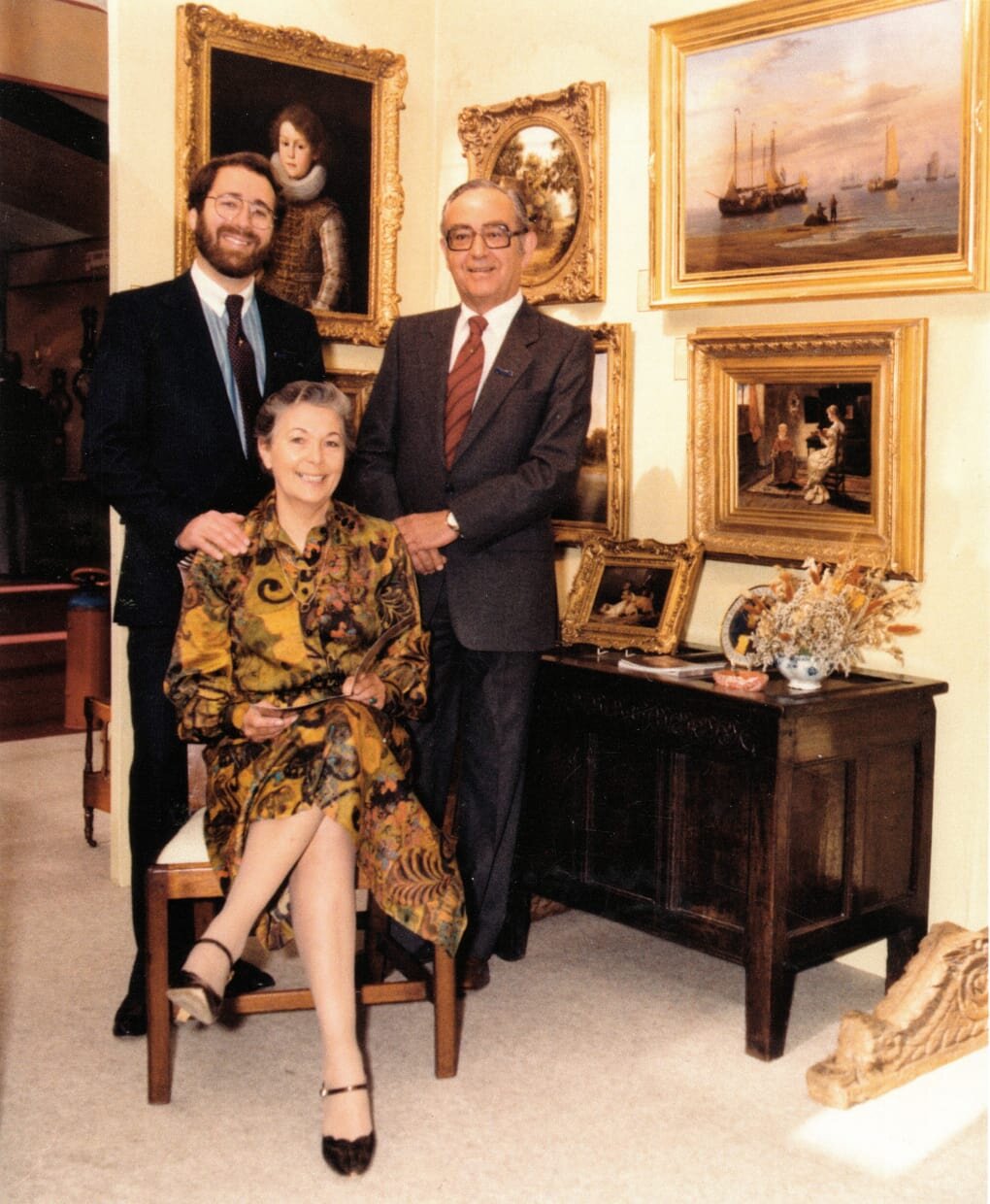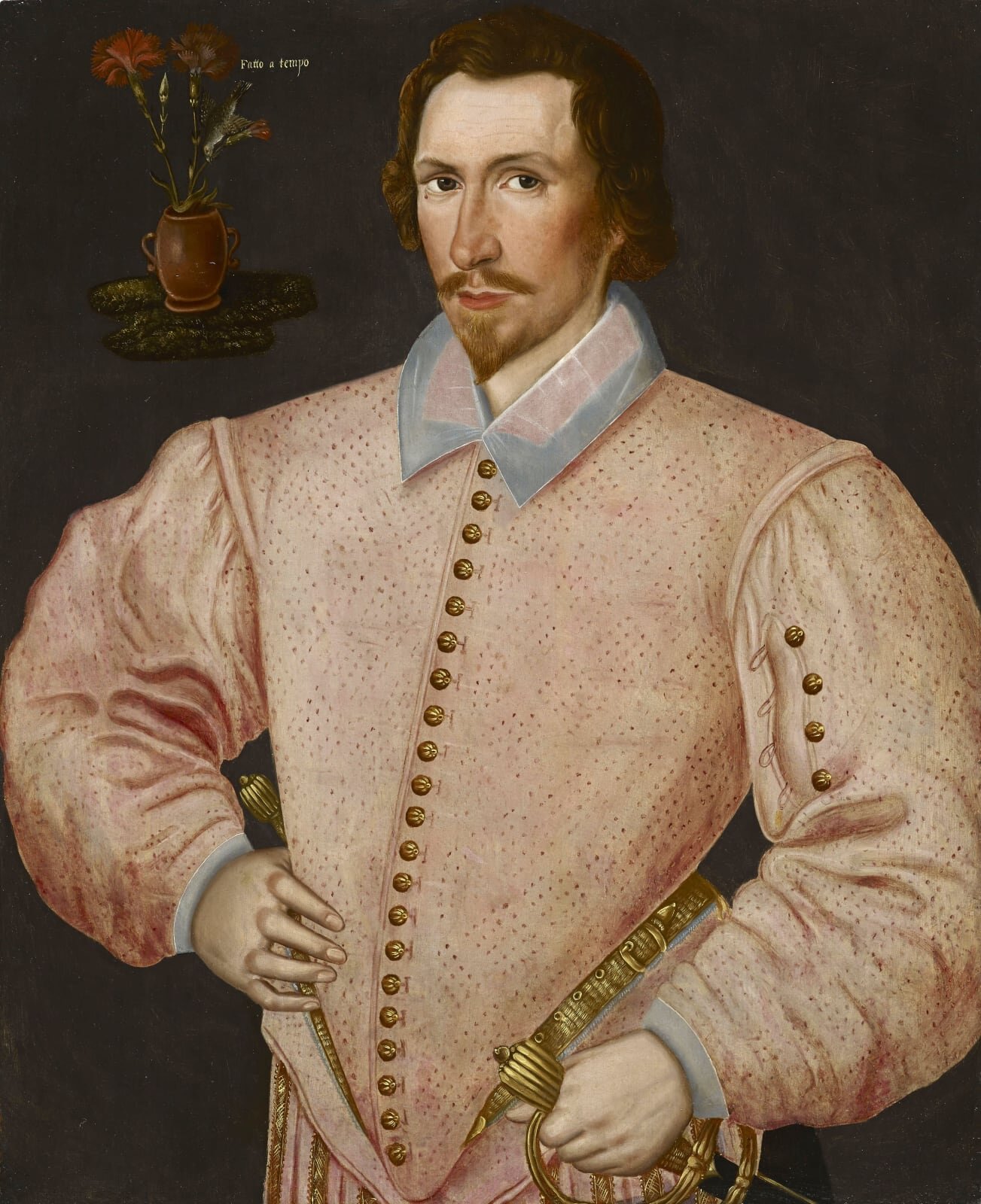Do you like your portraits to be historical? If so may I take you through the doors of The Weiss Gallery? Founded in 1985 by Mark Weiss and with a focus on museum-quality portraits, The Weiss Gallery are amongst the foremost dealers in Tudor, Stuart and Northern European Old Master Portraiture. Located in the heart St James on Jermyn Street in London, the gallery thrives on securing notable sales to distinguished private and public painting collections worldwide.
I like the fact that the gallery team work hard to share their passion and expertise with as wide an audience as possible. It has also been a revelation to observe their success in demonstrating that Old Masters can hold their own side-by-side with contemporary masterpieces. I caught up with Mark to talk about the world of art dealing, including connoisseurship, scholarship, integrity, risk and patience.
When, where, and how did your passion for art begin?
My parents, who both were artists in their own right, started art dealing in the early 60s from our then home in a small seaside town in Essex called Brightlingsea. So I grew up in a milieu of always being surrounded by paintings. Then as a teenager, and seeing how successful they were and having moved to a very large house in Colchester, all I ever aspired to was to join the family business.
Mark Weiss with his parents Ivor and Joan Weiss.
How has the nature art dealing changed throughout your career?
The art and antique trade has changed out of all recognition during the nearly 50 years of my career. The main obvious factors that have impacted the trade have been the ever diminishing supply of fresh stock, which has resulted in a steady contraction of dealers and galleries. You only have to look at just some of the famous businesses that have disappeared from Mayfair and St. James's during this time, Wildenstein, Frost and Reed, Koetsers, Ackermans, Artemis, Leggatts, Legers, and more recently the sale of Agnews and Colnaghi's. Also most recently Johnny van Haeften's move from Duke Street to deal from home. These great galleries were the panolpy of an Old Master trade whose supply in part relied on ''runners'' and provincial dealers who covered the many weekly country auctions.
In London too there were far more regular sales, with Christie's and Sotheby's having dedicated sales to British paintings, now disappeared through lack of supply. The internet and smart phones means that information can travel round the world in a heart beat. So the odds of making discoveries in small provincial auctions are now exceedingly difficult to make. The other major transformational change has been that whereas in the past Sotheby's and Christie's market was primarily the trade, now they have in effect become dealers themselves both in the way they market their auctions to through their creation of powerful private sales divisions. All these changes have made life far harder for galleries to survive.
The Weiss Gallery, 59 Jermyn Street, St. Jame’s, London SW1Y 6LX.
What is the biggest challenge you face professionally?
The biggest challenge, apart from sourcing stock, is to keep Old Masters, and the portraiture that I deal in, relevant to a radically changing clientele and market.
When do you feel the best art was produced and why?
I have to say that whenever I stand in awe in front of late Gothic masterpieces by the so-called Flemish ''Primitives'' such as Van Eyck, Van de Weyden and Memling, I do wonder if painting subsequently ever actually achieved such technical mastery ever again. But that said, surely the Dutch 'Golden Age' must be the apogee. I do not really consider myself an art historian, so I will leave the reason why to true scholars!
What is it about portraits that speaks to you specifically? How would you describe their enduring appeal?
I have always been a 'people person' and a humanist, so I have always had a fascination with the human face. Portraiture will always have an enduring appeal, as there are so many aspects of potential interest. Whether it be the sitter, the artist, the provenance, the costume, or simply its intrinsic artistic qualities. For me I often find it particularly moving that it can be the only surviving memorial to the sitter's life.
The Long Gallery at The Weiss Gallery.
Can you name one work which was particularly difficult to part with?
One painting which I would dearly loved to have been able to keep for myself would be a veritable masterpiece of early British portraiture, the ravishing child portrait dated 1603 of Princess Elizabeth Stuart, renowned later as the Winter Queen, by Robert Peake. Despite having been mis-identified in Roy Strong's 'English Icon', it came up for sale at Christie's in 1989 with an estimate of £80,000-£120,000. I was determined to purchase the painting at almost any cost and successfully acquired the work for the then enormous sum of £200,000.
My researches established not only her true identity, but its very significant provenance, and its significance as the earliest example in English art of a royal sitter depicted full-length in a landscape setting. I quickly made a sale for £300,000 to the National Maritime Museum, specifically to hang in the newly refurbished Queen's House at Greenwich. I was invited to the formal opening by the Queen and my researches were subsequently published in the Apollo magazine, so for many reasons this painting is very special for me.
Princess Elizabeth Stuart/The Winter Queen, by Robert Peake.
How would you advise a young collector to start a collection?
Very simply, always stretch your budget to buy the very best that you can afford and it is always best to seek out advice from a trustworthy dealer or advisor. But only ever buy a work of art because you love it, and want to live with it, never as an investment.
Is it possible to describe your profession in just five words?
Connoisseurship, scholarship, integrity, risk and patience.
JAKOB FERDINAND VOET (1639 - 1689)
JOHN OFFLEY (1650 – 1688) OF MADELEY AND CREWE HALL [?]1670 - 75
Oil on canvas 30 x 25 in. (76.2 x 63.5 cm.)
HIERONIMO CUSTODIS (FL. 1585 – 1593)
AN ELIZABETHAN COURTIER, POSSIBLY SIR THOMAS DRAKE OF BUCKLAND ABBEY, YELVERTON (1556 – 1606) circa 1590
Oil on panel 30 x 24 ¾ in. (76.2 x 62.8 cm.)
Which other dealers impress you the most and why?
Johnnny van Haeften for his winning combination of charm and brilliant salesmanship, Bob Haboldt for his great eye, and Richard Green for his genius at maintaining a sustained dominance for more than six decades in the art market.
Finally, if you could ask any artist just one question, what would it be?
I would ask Rembrandt if he would be so kind as to paint my portrait!
Nick Cox / Period Portraits April 2020.
For more information on The Weiss Gallery Inventory you may visit www.weissgallery.com
Main image Mark Weiss with Paul van Somer (1576 - 1621), Sir Thomas Dallison, 2nd Bt. of Laughton (1591 - 1645), painted c.1620.







![JAKOB FERDINAND VOET (1639 - 1689)JOHN OFFLEY (1650 – 1688) OF MADELEY AND CREWE HALL [?]1670 - 75Oil on canvas 30 x 25 in. (76.2 x 63.5 cm.)](https://images.squarespace-cdn.com/content/v1/5735da3101dbaec47dd35e4a/1587129138508-7BXCP0X0420BYLZ4HWMZ/voet-jakob-ferdinand-john-offley-hr-framed-.jpg)
